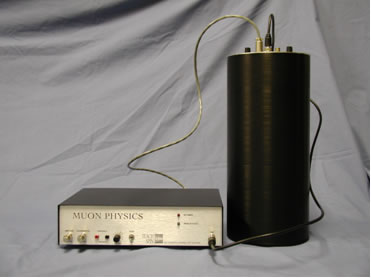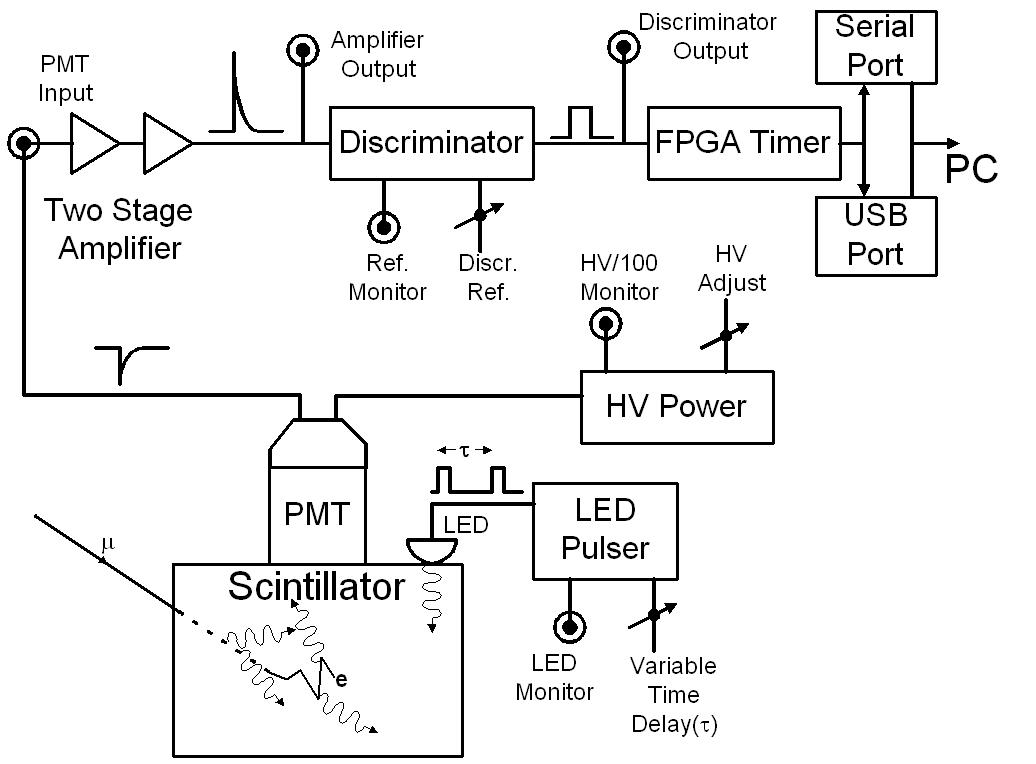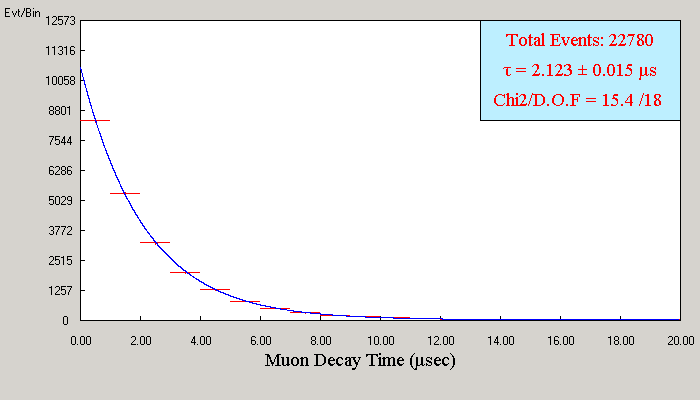![]()
 Using
the readily available (and reliable!) flux of muons at sea
level, we measure the muon's lifetime by the standard technique of
using a fat cylinder of plastic scintillator to slow and stop some of
the muons, and a single photomultiplier tube to view the two
scintillator flashes associated with the entry and decay of the
stopped muons. The time between the two flashes is then histogrammed
and fit with an exponential distribution to extract the lifetime. In
the right-hand figure, the scintillator and photomultiplier tube are
contained in the black cylinder and the small box contains the
measuring electronics.
Using
the readily available (and reliable!) flux of muons at sea
level, we measure the muon's lifetime by the standard technique of
using a fat cylinder of plastic scintillator to slow and stop some of
the muons, and a single photomultiplier tube to view the two
scintillator flashes associated with the entry and decay of the
stopped muons. The time between the two flashes is then histogrammed
and fit with an exponential distribution to extract the lifetime. In
the right-hand figure, the scintillator and photomultiplier tube are
contained in the black cylinder and the small box contains the
measuring electronics.
 A muon enters the
scintillator, slows and then stops, causing the scintillator to emit a
flash of light as the kinetic energy of the muon is transferred to the
scintillator. Some time after the muon stops, its decay into an
electron and two neutrinos produces another flash of scintillator
light. Unlike conventional approaches to time the 2.2
sec muon lifetime that rely on expensive CAMAC and
NIM circuitry often found only in particle physics research labs, we
designed and developed timing circuitry that uses the properties of a
special integrated circuit (IC), a field programmable gate array
(FPGA). This flexible IC can be programmed to behave in many ways and
its incorporation into a printed circuit board is relatively
inexpensive. The figure to the right is a block diagram of the overall
instrument.
A muon enters the
scintillator, slows and then stops, causing the scintillator to emit a
flash of light as the kinetic energy of the muon is transferred to the
scintillator. Some time after the muon stops, its decay into an
electron and two neutrinos produces another flash of scintillator
light. Unlike conventional approaches to time the 2.2
sec muon lifetime that rely on expensive CAMAC and
NIM circuitry often found only in particle physics research labs, we
designed and developed timing circuitry that uses the properties of a
special integrated circuit (IC), a field programmable gate array
(FPGA). This flexible IC can be programmed to behave in many ways and
its incorporation into a printed circuit board is relatively
inexpensive. The figure to the right is a block diagram of the overall
instrument.
The result of our measurement for roughly 23,000 muon decays is shown
in the next figure, with the muon lifetime result shown in the upper
right hand corner. The result is slightly less than the familiar free
space value of because the muons whose decays we observe are measured
in matter, and (negative) muons in matter have a second decay channel
in addition to their spontaneous decay.

Contact either Thomas
Coan or
Jingbo Ye for more
details.
![]()